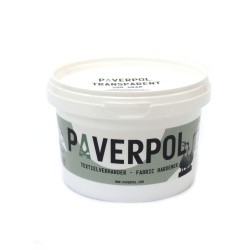Art Mediums, Transfer Medium, Sugar Medium, Hardening Medium
Here you can find different types of mediums with various applications. Surface pre-treatment medium, transfer medium, sugar medium, hardening medium, spill-effect medium, acrylic candle-drawing medium, shiny and polished surface medium. With us you can find all the necessary materials for your hobby at affordable prices.
View more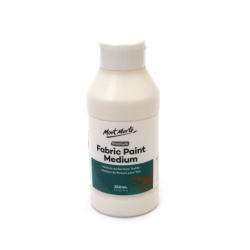
Mont Marte Fabric Paint Medium for Acrylic Paints, Textile Medium, 250 ml
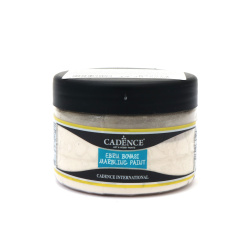
EBRU Marbling Dry Thickening Medium with Gum Tragacanth, CADANCE, 45 ml – Paper/Water Marbling Size for Hobby & Professional Use

Mont Marte Acrylic Pouring Medium for Fluid Art Effect, 1 Liter

Mont Marte Acrylic Pouring Medium for Fluid Art Effects, 240 ml

Mont Marte Gloss Acrylic Medium 250 ml

MM Acrylic Flow Medium for Pouring Technique, 500 ml

Mont Marte Acrylic Flow Medium for Pouring Technique, 250 ml

Mont Marte Matte Gel Medium, 250 ml

Mont Marte Gloss Gel Medium 250 ml

Mont Marte Matte Acrylic Medium 250 ml

Gum Tragacanth Ebru Marbling Thickener (Marbling Size), CADENCE - 500 ml, High-Quality Thickening Medium for Turkish Paper Marbling, Artists & Hobbyists

Glass & Tile Gloss Medium, 120 ml, CADENCE – High-Shine Finish for Polished Surfaces; Enhances Glass, Crafts & DIY Decoration; Easy Application, Long-Lasting Gloss
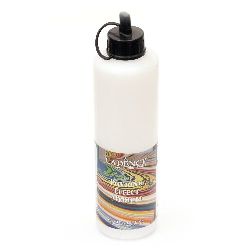
Pouring Medium, 500 ml, CADENCE – For Acrylic Paints, Fluid Art & Spill/Paint Pour Techniques; Ideal for Art & Hobby Projects
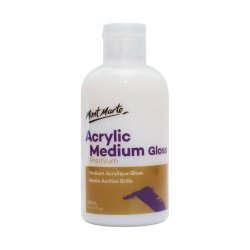
Mont Marte Acrylic Medium Gloss, 135 ml
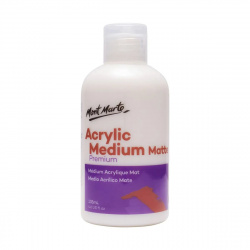
Mont Marte Acrylic Medium Matt Finish, 135 ml
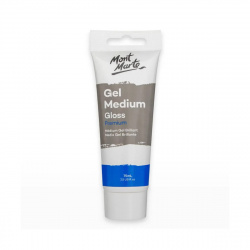
Mont Marte Gloss Gel Medium, 75 ml

Mont Marte Matte Gel Medium, 75 ml

Acrylic Transparent Medium, Multi-Surface Craft Adhesive & Sealer for Brush-On Application, Flexible Finish for Decoupage, Collage & Mixed Media, 200 ml
Processing with Mediums
Various painting techniques utilize a variety of additional materials that significantly influence the quality of paints.
Mediums are used to improve the flow of paints, reduce their thickness, and increase their transparency. They help improve the blending of individual colors, enhance the flexibility and elasticity of the paints, and improve their adhesion to the surface.
Depending on the effect you wish to achieve, you can use mediums to thin or thicken the paint, enhance or diminish its gloss, accelerate drying time, create texture, or provide final or temporary protection.
Here, you will find a variety of mediums for applied arts, such as surface preparation mediums, transfer mediums, sugar mediums, hardening mediums, acrylic mediums for painting on candles, pouring effects, as well as mediums for glossy or polished surfaces.
Application and Purpose of Mediums for Applied Arts
It is recommended to use mediums for applied arts, also known as working varnishes, especially if you are working with oil paints to thin them.
In addition to the thinner itself, they also contain linseed oil, which softens and mitigates the unwanted properties of the thinner, protects the paint from burning or discoloration, and preserves its natural gloss.
It is important to remember that a medium is not a final varnish and is not suitable for cleaning brushes.
Mediums have a composition similar to acrylic paint but without the color pigment. They are essential for any mixed media project, as they can be used in place of collage glue, have strong adhesive properties, and allow materials like wood or paper to easily and permanently adhere to the canvas. Mediums also allow for layering and the creation of various textures.
Types of Mediums for Applied Arts
There are several different types of mediums, which vary according to the final effect they impart. Generally, they are divided into heavy and light.
- Acrylic Medium or Pouring Medium (Heavy) – This is the standard medium that enhances the natural flow properties of acrylic paints without affecting their brightness. It creates impressive flowing patterns without the need for color mixing. It is suitable for various techniques such as dripping, pouring, and direct application on large surfaces.
With its help, you will achieve high color contrast and a pouring effect. Once dried, the medium is flexible, waterproof, and transparent depending on the mixing ratio, and can have a semi-matte or glossy finish.
- The Classic Medium is simply a medium and is the most common product on the market, available in various versions. It is further divided into two types, as it can have different finishes after drying – matte or glossy.
This type of medium can also be used as glue but can be used in other interesting ways, such as mixing it with glitter, paint, or 3D powder. One of its best qualities is that once dry, it becomes extremely durable.
- Light Mediums – They are lighter in consistency, not as thick, and more fluid but are just as sticky as the heavy ones. They are also available in matte and glossy versions. They can be used to glue paper, tissue paper, rice paper, and various small decorations such as beads, balls, stones, glitter, and more.
Different mediums can also be combined without any issues, for example, if you want to make a glossy finish matte, just mix it with a little clear gesso, and you will get a soft matte finish.
Gesso, on the other hand, is a very versatile product that you can use on paper flowers, making them much more durable and vibrant.
Why is it good to use a medium when creating?
Using a medium is of great importance, especially when working with oil paints. We all know that the most beautiful effects in oil painting on canvas are achieved thanks to the layers of paint applied to the canvas.
However, to layer the colors, each one must have a different drying speed, and this is precisely achieved with the help of mediums.
The magic happens when they are mixed with paint in the right ratio, which can be quite challenging for less experienced artists and enthusiasts.
Conditions for Using Mediums
Mediums are a white liquid that becomes transparent once dry. They are used for surface preparation and to glue various materials like wood, glass, metal, polymer clay, and others, ensuring a transition to subsequent processing.
They are applied using a brush, roller, or sponge. During use, the product does not release harmful substances.
It is important to close the container tightly after use, keep it away from direct sunlight, and prevent it from freezing.
When dry, mediums for applied arts form a colorless, transparent, and flexible waterproof layer with a high degree of gloss. They can be used alone or colored with acrylic paints and acrylic inks.
They are diluted with water, and if you want to thicken the consistency, a binder can be added. It is important to mix very carefully to prevent unwanted bubbles from forming. They should be used at a temperature of about 10 degrees Celsius.
All tools should be cleaned with water only.
Here are some more detailed instructions for using mediums for applied arts:
- Before starting, make sure to cover your workspace and clothing well;
- Shake the pouring medium well before use;
- Place the working materials, acrylic paint, and pouring medium on the workspace;
- Place each color in separate containers, then mix the paint with a few parts of the medium and stir well with a spatula;
- To pour the paint completely and create unique paintings, use different techniques;
- After finishing, let the excess paint drip by slightly lifting the canvas from the base;
- Allow drying for several days, depending on the amount of medium added and the room temperature;
Mediums can be used in many different projects when working with acrylic paints, polymer clay, and napkins for decoupage in the decoupage technique.
Here is some additional information about acrylic paints and polymer clay:
Acrylic Paints
Acrylic paints are known for being among the most widely used in the world, as they can be used straight from the tubes or diluted with water to create a lighter and more watercolor-like effect.
Although they are easy to use, beginners might encounter some challenges. However, what’s great about acrylic paints is that they are extremely easy to learn and quickly become an expert in their use.
When using acrylic paints, it’s important to follow these few tips:
- Keep the acrylic flexible;
- Clean your brushes regularly;
- Paint over acrylic washes;
- Mix colors quickly;
- Create sharp edges;
Polymer Clay
Polymer clay is a plastic synthetic material used for modeling figures and motifs. It is called clay because it has many similar qualities to the natural material, but unlike it, polymer clay is entirely artificial.
It is usually quite soft, almost like plasticine, but when baked, it becomes as hard as porcelain. It is mainly used for making jewelry, decorative items, and small details due to its high plasticity.
Some of Our Products
- Thickening Medium for EBRU Technique TRAGACANTH CADENCE, 500 ml;
- Medium for Glossy and Polished Surfaces, CADENCE GLASS TILE MEDIUM, 120 ml;
- Pouring Medium CADENCE, 500 ml;
- Medium CADENCE GLAZING MEDIUM, 120 ml;
- Acrylic Medium Mont Marte, Gloss, 135 ml;
- Acrylic Medium Mont Marte, Matte, 135 ml;
- Gel Medium Mont Marte, Gloss, 75 ml;
- Gel Medium Mont Marte, Matte, 75 ml;
- Transparent Medium LORCA, 75 ml;
- Transparent Medium LORCA, 200 ml;
- Semi-transparent Sugar Medium LORCA, 125 gr;
- Semi-transparent Sugar Medium LORCA, 300 gr;
- Hardening Medium CADENCE PORCELAIN MEDIUM, 250 ml;
Price Range
All the mediums for applied arts that you will find with us are at exceptionally low and affordable prices.
Why EM ART?
On our updated website, you will find everything you need for realizing any of your ideas or projects. If you have any inquiries or questions, our experienced consultants will assist and guide you.
In the same category "Structural Pastes and Waxes," you will find a wide range of antique pastes and waxes, varnishes, casting materials and effects, patina, primers for mixed media, decoration, and powders.
Delivery
For orders and delivery, we would like to inform you that when purchasing from the website, payment via cash on delivery can be made through postal money transfer or bank transfer. We strive to make things as convenient as possible for you, our customers, because we know how valuable your time is.
Orders can be placed 24 hours a day, 7 days a week, and deliveries are made within a few business days from the moment the order is confirmed.

